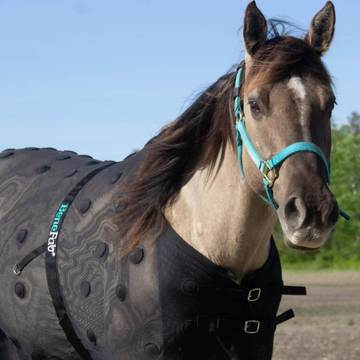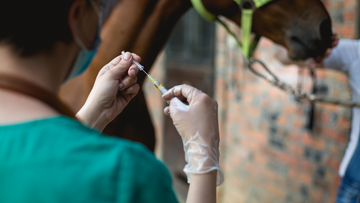If your horse feels off, like dragging behind or having rough transitions, it could be a hock issue. That could mean it's time to consider hock support or injections. But you might be wondering, what exactly are these injections for? And more importantly, are they the right choice for your horse? Let’s go over what hock injections are, why they’re used, and how to support your horse before and after the procedure.
What are Hock Injections?

Hock injections are when a vet injects medication directly into the hock joint. This can help to reduce pain and inflammation, allowing your horse to move more comfortably. Horses in sports such as dressage, jumping, reining, or barrel racing often have excessive stress put on their joints and can benefit from receiving hock injections. Trail horses or seniors may also need them if they’re uncomfortable.
How Do I Know if My Horse Needs Hock Injections?
The decision to inject should be carefully considered. If you think your horse might benefit from hock injections, discuss with your vet. A lameness exam, flexion tests, or imaging can help confirm the need for further evaluation. In addition to an evaluation, you might notice:
-
A decrease in hind-end engagement
-
Trouble picking up or maintaining a lead
-
Reluctance to collect or sit on the hindquarters
-
Stiffness in the first few minutes of work
-
Behavioral changes under saddle (bucking, resisting, tail swishing)
Other issues can cause these symptoms, so be sure to discuss your concerns with your veterinarian. Hock injections are a tool that many riders and veterinarians use to help horses feel and perform at their best.
What To Expect
Hock injections are typically done on the farm or at a vet clinic. To keep your horse safe and relaxed, sedation is used. The area is scrubbed to lower the risk of infection. After the injections, most horses require a few days of rest, typically 2–4 days, followed by a gradual return to work. Results vary by horse and the severity of the problem, but many horses feel and perform better for months or even over a year.
Supporting Your Horse Post-Injection
Like people getting joint treatments, horses need good care before and after injections. This is where supportive therapies can be beneficial, and it’s exactly why we created our SmartHock Boots.
The boots have far-infrared minerals that help blood flow and reduce stiffness. Whether your horse gets hock injections or you’re trying to prevent them, SmartHock Boots are a solid daily option.
These boots are easy to use, breathable for turnout or recovery, and flexible to fit your horse’s leg well. They are a proactive way to keep your horse feeling good and staying at work longer!
Considerations for Hock Injections
Hock injections are a valuable tool when used appropriately. But like all tools, they work best when combined with thoughtful management, conditioning, and daily support. Before trying injections, check the basics. Footing, saddle fit, and support therapies can make a difference.
If you’re wondering whether your horse might benefit from hock injections, talk to your vet and make a plan. And if you're looking for a way to keep those hocks happy every day, our SmartHock Boots might be the smartest investment you make this season!






















